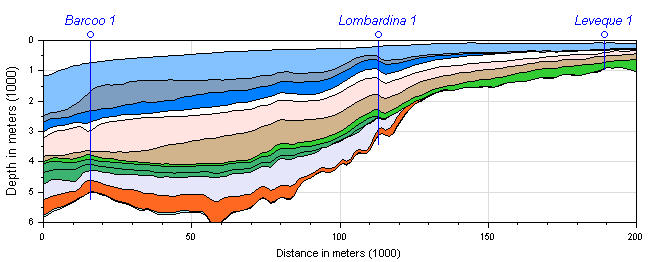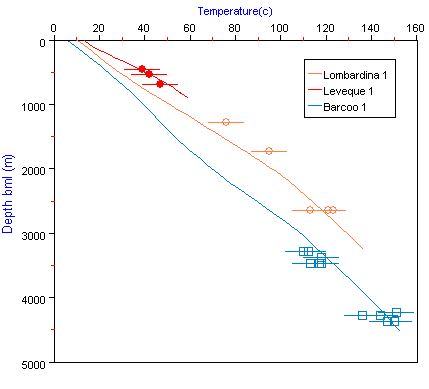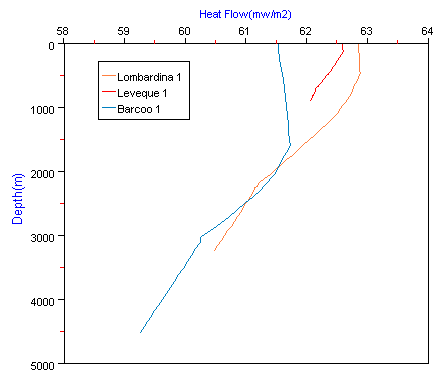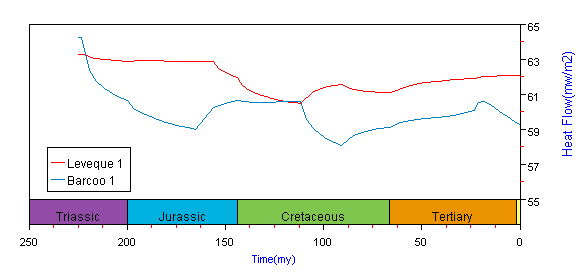In a typical basin, the wells we drill that have temperature and VR data are located on structure highs. However, hydrocarbons are generated from the deeper part of the basin called kitchens. The heat flow determined using the available well data does not represent the heat flow in the deeper basin, where we do not typically have data. Using the full lithosphere thermal model in Genesis, we can match the well data with a crust model, and then the same crust thickness (or a a variable crust thickness based on the basin geometry) may be used in the kitchen to automatically predict heat flow and thermal history in the kitchen area. Below is an example from the Browse basin of NW Australia.

In this rare case, we have wells both from the shallow water shelf, and the sub basin in deeper water. The first model is constructed to fit the temperature data in the shallow Leveque-1 well on the shelf (the red curve below) by adjusting crust thickness. And then, pretending that we do not have temperature data in the deeper locations, the same crust and lithosphere thickness is used to "predict" the heat flow and temperature profile in the two deeper wells, Lombardina-1 (orange) and Barcoo-1 (blue).

As you can see, the prediction is spot on - compared to temperature data from the deeper wells. However, in most basins and areas we work, we do not have the luxury of the deeper wells. Using the same heat flow from the shallow wells will over estimate the maturity of the source rock in the kitchen. In areas the crust thickness is known to thin into the basin (rift basins or passive margins), including the thinning of the crust in the model can help predict the much lower heat flow in the deep basin.
The following figure shows the heat flow profile at each of the well locations. The deeper basin has systematically lower basal heat flow, due to more rapid deposition rate since Miocene. The vertical increase in heat flow to shallow depths is due to the radiogenic heat produced in the shale sections of the sediment column. So mindful that shallow data may not represent basal heat flow.

The heat flow history is also different between the deep and shallow locations. This last figure (below) shows the effects of deposition rates over heat flow history at the shallow (Leveque-1) and deep (Barcoo-1) locations (after removing the effects of rifting). The heat flow at the deeper location has been depressed by the faster deposition at Jurassic, Cretaceous and Miocene times. To be clear, the deposition rates in the Browse basin is mild compared to basins with rapid deposition (such as the Niger delta, the south Caspian and the Gulf of Mexico, where heat flow can be depressed by up to 50% in depocenters. Predicting heat flow away from well control is even more important there.

Back to Genesis main page
Back to products page
©2001, ZetaWare, Inc. All rights reserved



